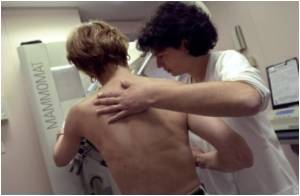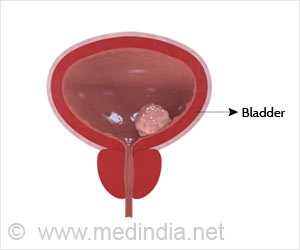High-beam radiation for breast cancer using the Accuray CyberKnife System improved cosmetic results, less radiation exposure to surrounding tissue and a shorter treatment period.

While CyberKnife has been used at UT Southwestern since 1997, it primarily has been targeted for tumors of the brain and spine.
“If this had not worked out for me, I would have gone with six and a half weeks of traditional radiation,” said Dr. Wiginton, 45, an associate professor of health studies at Texas Woman’s University.
Instead, her treatment took less than two weeks and consisted of five 90-minute sessions every two to three days. Her final treatment was Feb. 3 at UT Southwestern University Hospital – Zale Lipshy.
Radiation therapy following a lumpectomy is commonly recommended to remove potential residual cancer, said Dr. Robert Timmerman, professor of radiation oncology and neurological surgery who is leading the study. Current radiation protocols for breast cancer, however, can be long and uncomfortable. Shorter courses treating smaller breast volumes, called partial breast irradiation, have shown considerable promise in clinical studies, he said. The most common partial breast irradiation approach, brachytherapy, requires a catheter implant via a surgical procedure. Another method delivers the treatment using conventional radiotherapy equipment but may lead to less-pleasing cosmetic results.
Dr. Wiginton described her first CyberKnife session as painless. Though a bit tired, she said the treatment was not uncomfortable and she spent most of the time listing to music on her iPod.
Advertisement
The trial’s protocol is being carried out in conjunction with experts in the UT Southwestern Center for Breast Care at the Harold C. Simmons Cancer Center, the only National Cancer Institute-designated center in North Texas.
Advertisement
Instead of standard radiation therapy systems that require heavy equipment with very limited maneuverability and beam direction, CyberKnife uses a lighter linear accelerator on a robotic arm to focus multiple beams of radiation with a millimeter precision, while leaving surrounding healthy tissue unharmed.
“The impetus for this protocol is to avoid that invasiveness while still achieving excellent cosmetic results,” said Dr. Timmerman, referring to the typical brachytherapy procedure. “This gives the same amount of radiation, but in a noninvasive way. Each [CyberKnife-delivered] beam is very weak, so it causes very little entry damage. It will move around to 200 different positions.”
Qualified participants must have localized early-stage breast cancer, must have successfully underwent a lumpectomy and be at least 18 years old. Patients will be evaluated over the next 10 years to check if they remain cancer-free, for potential cosmetic changes in the breast and any unanticipated effects that may develop from radiation treatment.
Dr. Wiginton, referred for the study by Dr. Dan Garwood, associate professor of radiation oncology, said she hopes the procedure will be successful and offer new radiation therapy options for breast-cancer patients.
Because heart disease ran her family, traditional radiation therapy wasn’t a good choice for Dr. Wiginton due to potential damage to surrounding tissues, including the heart. CyberKnife’s precision greatly lessened that risk.
“If they’re willing to use it on brain cancer, I think it’s a fairly safe bet to use in a breast,” Dr. Wiginton said.
Source-Medindia













